
In July 2017, Glacier Park International Airport threw a little party. That month, for the first time in its 75-year history, the airport welcomed more than 40,000 outbound passengers in a single month. It was a big moment, said Airport Director Rob Ratkowski, and to celebrate that milestone it honored the 40,000th passenger with a celebration.
Four years later, in July 2021, the airport handled more than 72,000 outbound passengers in one month and Ratkowski said there just wasn’t any time to celebrate that new record. By then, Ratkowski and his team were doing everything they could to keep their head above water running one of Montana’s busiest airports.
The Flathead Valley has grown — in both population and popularity — dramatically in the last decade. And perhaps no institution has seen the impacts of that growth more directly than Glacier Park International Airport, which caters to both the hundreds of thousands of people trying to come here every year and those who live here. And to handle that growth, the airport is now embarking on a massive expansion, one that will hopefully — and that’s the key word — handle the area’s growth for years to come.
“The pace of growth has been astounding,” Ratkowski said in his temporary office at the airport a few weeks back. “You always expect and hope for growth. But nothing like we’ve seen in the last few years.”
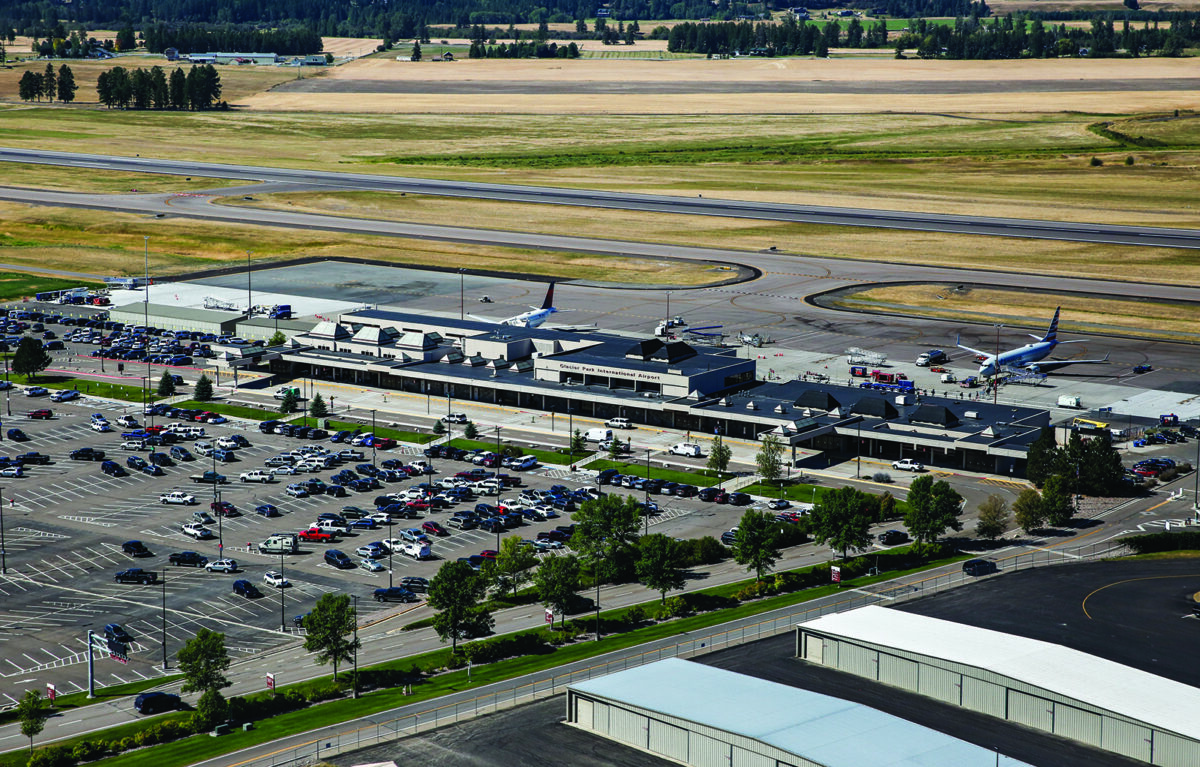
While Glacier Park International Airport is one of the busiest in the state, it wasn’t the first in the Flathead. That title goes to the Kalispell City Airport, just south of downtown Kalispell. The first recorded flight to land on that patch of grass (located behind Rosauers along U.S. Highway 93) was in 1911, almost two decades before it was actually opened as an airport. In the fall of 1928, Kalispell purchased the 137 acres there to turn into a general aviation airport and it was formally dedicated on July 3, 1929.
But there was one problem with that airport. With downtown just to the north, there really wasn’t a lot of space for it to grow. Realizing that they needed to find a better spot for a bigger airport, civic leaders began eyeing a patch of grass just south of Columbia Falls. In late 1940, the Flathead County Board of Commissioners sent a letter to the regional manager of the Civil Aeronautics Authority in Seattle informing him that they had found an ideal spot for a new airport. About a week later, Paul Morris, the regional airport engineer in Seattle, pinned a letter back.
“Having made a personal inspection of the property outlined as proposed for an airport on this map, I am pleased to advise that the site is satisfactory and adequate for airport development and it would be my recommendation that purchase be made of the property so that your committee and community will be in a position to have an adequate field,” Morris typed, in a letter that can still be found in the airport’s front office today.
The following year, they began to clear land for a runway off LaSalle Road. In the early years, the locals even called it “The LaSalle Airport,” due to the proximity to the road that connects Kalispell and Columbia Falls (today it is better known as U.S. Highway 2). Over the next few years, a runway was constructed and a small terminal and waiting room were built. In 1948, after the airport was completed, the Civil Aeronautics Authority (the precursor to the Federal Aviation Administration) designated it as the “Flathead County Airport” with the International Air Transport Association airport code of “FCA” (That’s why whenever you look at your boarding pass it says “FCA” and not “GPIA”).
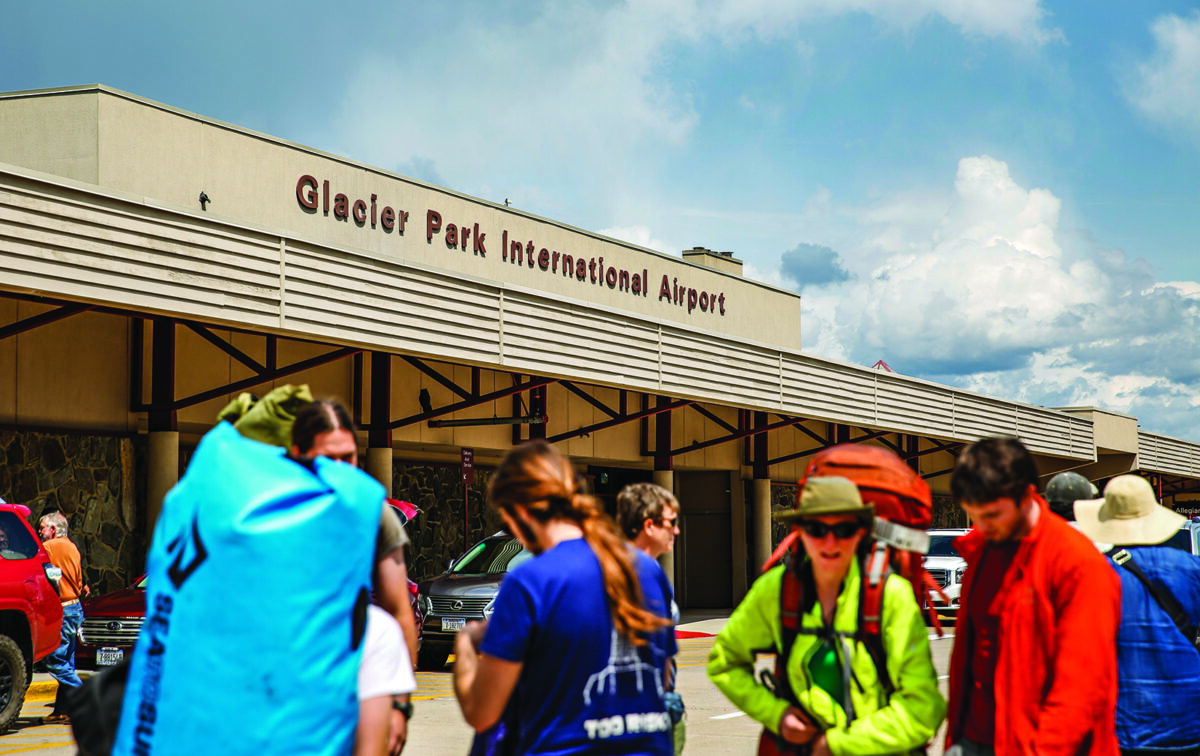
Commercial air service to FCA commenced on June 5, 1949, when Northwest Airlines (later to become part of today’s Delta) began regular service to the valley. The inaugural flight was actually due to land a few days earlier but had to be diverted to Missoula instead due to low clouds. When the first flight did finally arrive, it was welcomed by a crowd of 20,000 people, according to the Daily Inter Lake. Passengers aboard the first flight were greeted by a band of Blackfeet Indians who then led them off the plane toward an old-fashioned western chuck wagon where they were served breakfast. Local dignitaries and airline officials spoke during a brief ceremony and Northwest Airlines Traffic Manager H.L. Cummings commented that it was the biggest crowd he had ever seen turn out for an airport dedication in the state.
In news stories that ran in the days before the dedication, valley residents demonstrated excitement about the arrival of regular air service.
“I think it’s a wonderful idea,” Lillian Wiebe, a sales clerk in Kalispell, told the Inter Lake the day service began. “It connects us with the rest of the world and will be a great convenience for those who spend a great deal of time traveling. It will also mean prosperity, better service and faster transportation from Kalispell. It should put the Flathead Valley more ‘on the map.’”
Some people even thought that the arrival of commercial air service would force the Great Northern Railway — which had redirected its main line tracks from Kalispell to Whitefish in 1904 — to again route its premier streamlined passenger trains back south. That, of course, never happened.
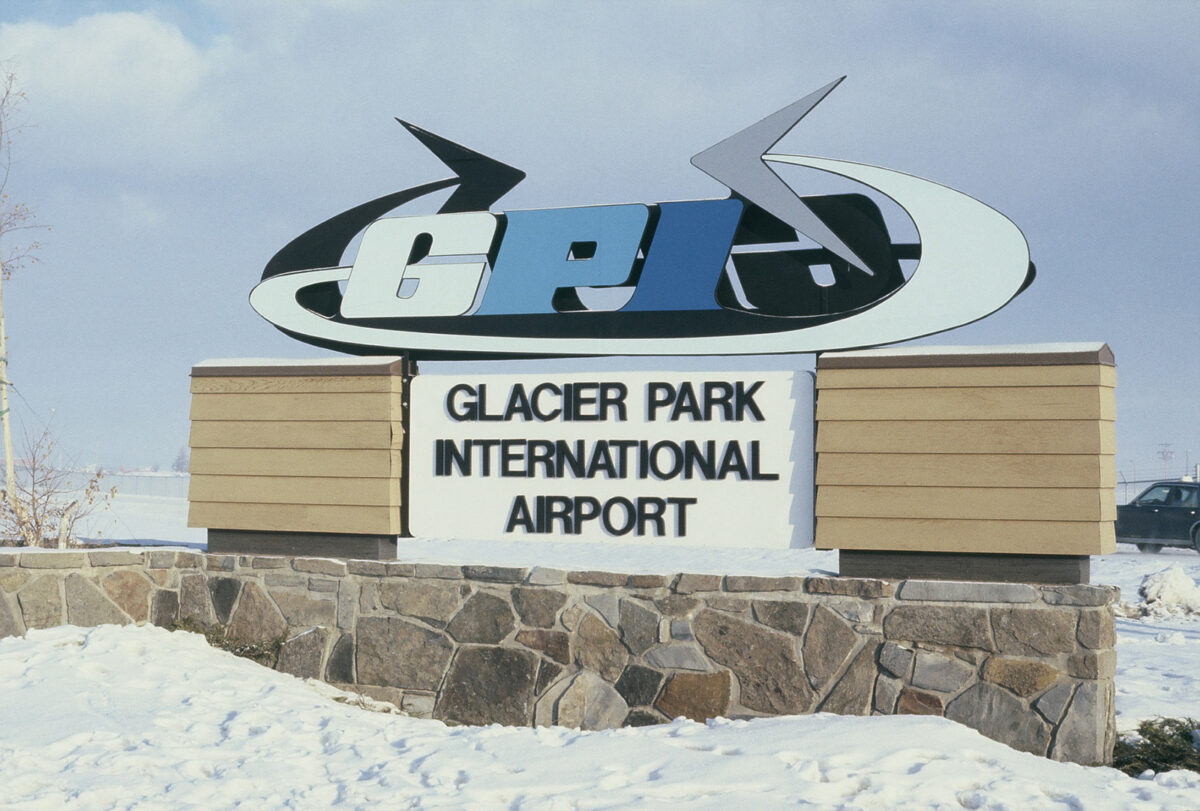
The comings and goings at the airport were big news in that era and just about anything that happened made headlines. On Monday, November 27, 1950, readers of the Inter Lake were greeted with the headline “No Flight Today, Still Fogged In.” The newspaper reported that because the cloud ceiling was at 500 feet and visibility was less than a quarter mile, the Northwest Airlines plane simply couldn’t land. That day, Missoula was having similar fog troubles, the newspaper reported, and a flight from Spokane simply skipped over Zoo Town and kept going to Helena. Such was life in the early days of commercial avation. While Northwest Airlines was cautious about when they could fly, it didn’t save them every time. In January 1950, the landing gear of a plane collapsed as it touched down. The “big ship” (as planes were often called back then) simply slid down the runway and into six-foot snowdift. Thankfully, no one was killed and only one passenger complained of neck pain after the abrupt landing.
In 1970, U.S. Customs set up shop at the airport, allowing it to accept flights from Canada. At about the same time it also got a brand new name: Glacier Park International Airport. According to a story in the Daily Inter Lake, the Flathead County Airport moniker had served the facility well until a few people figured out that the airport might not be taking full advantage of its proximity to Glacier National Park. Flathead County Airport Board Chairman Bill Heinecke told the newspaper reporter that he had received a letter from two Philadelphia physicians who liked to take an annual trip to Glacier, but they always flew into either Missoula or Great Falls. With the rebranding to Glacier Park International Airport, they had discovered a new option, one that was just 25 miles from the west gate of the park.
“This inquiry is likely the forerunner of many more which can be expected because of a change in name,” the reported mused. “Impressed as we are by where we live, certainly more people across the nation are aware of Glacier National Park than they are the valley of the Flathead.”
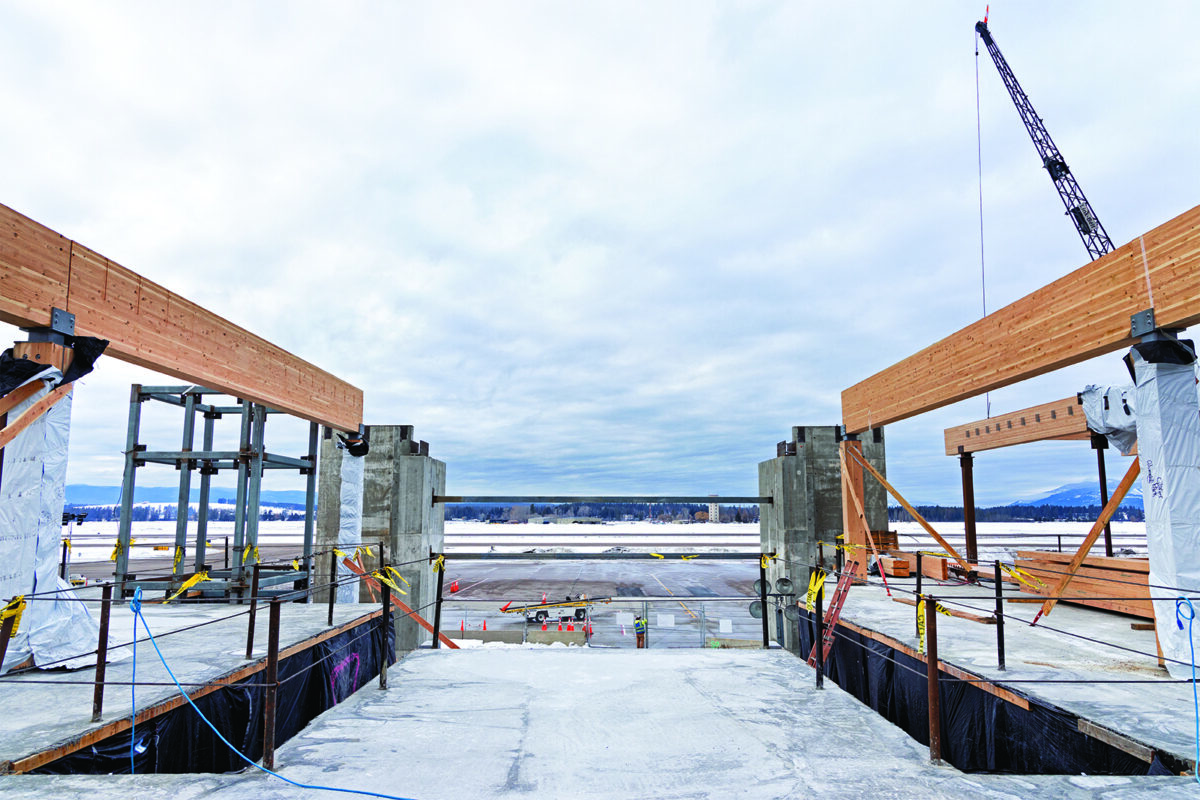
In 1983, more than 50,000 people flew out of Glacier Park International Airport. Forty years later, that frequently happens in a single month, especially in summer. Last year, more than 420,500 people boarded planes at FCA, a 17% increase over 2019 (airport officials like to use 2019 as a marker rather than 2020, when travel was heavily impacted by the COVID-19 pandemic).
Airport Director Rob Ratkowski — who has been at the airport for 19 years and been its director since 2015 — said the number of passengers that pass through the airport annually has grown dramatically in the last decade. To drive home that point, Ratkowski notes that enplanements (people getting on planes) at the airport has more than doubled since 2013.
Much of that is the result of the Flathead’s growing popularity but its also been aided by efforts by groups like Glacier AERO, a non-profit backed by local businesses and tourism groups to help bring more flight options to the airport. Board Chair Joe Unterriner said the group will help cover the cost of new or seasonal services by providing a minimum revenue guarantee to the airlines. That has resulted in American Airlines providing direct summer service to and from Dallas, Chicago and Los Angeles; Allegiant Airlines summer service from Oakland and Los Angeles; Delta Airlines winter service to Los Angeles; and United Airlines service to San Francisco (summer and winter) and Chicago (winter). The non-profit helps secure grants from the Federal Aviation Administration and other sources, and also does some marketing for the airport’s services.
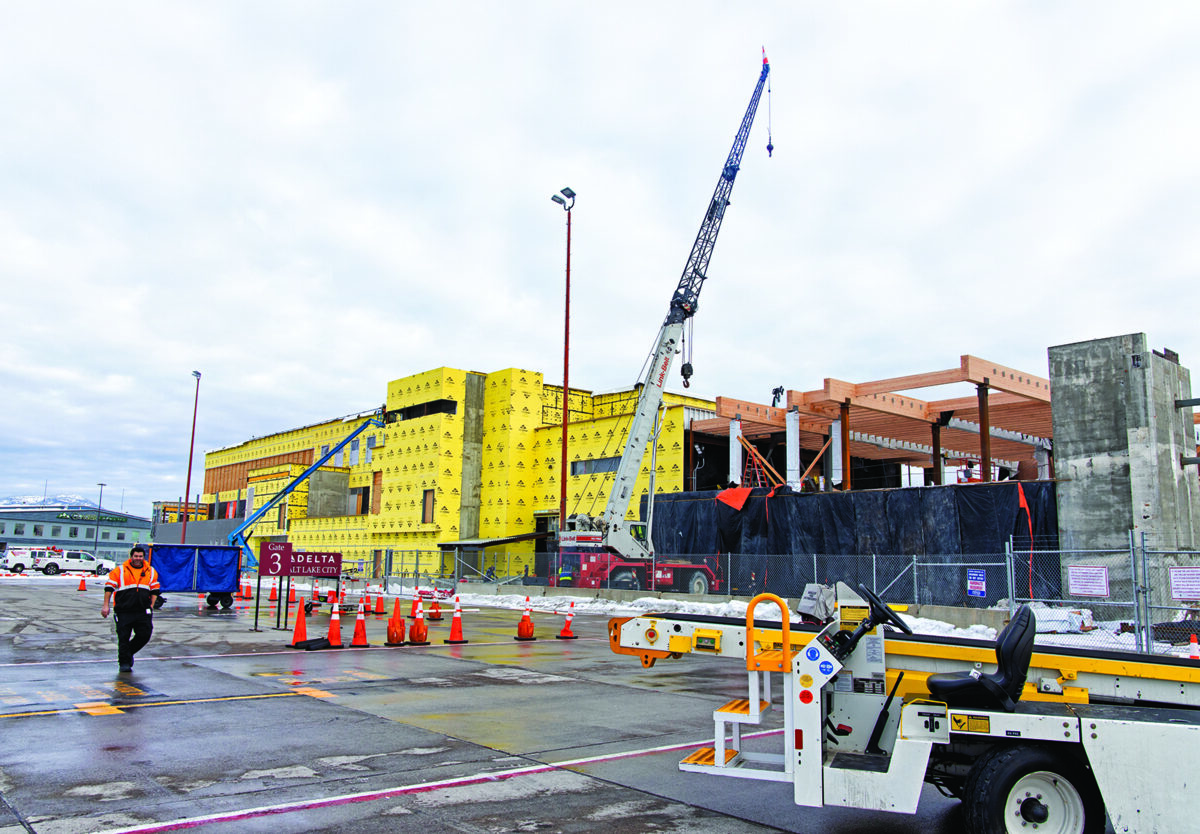
“(Glaicer Park International Airport) opens up our area to new markets and it really helps expand the Flathead Valley’s reach,” Unterriner said.
The airport is currently served by six carriers with flights to 15 major cities (depending on the season). Overseeing that entire operation is Ratkowski, who has a crew of 35 permanent employees doing everything from building maintenance to security. The airport also has its own fire department. When you count air traffic controllers, Transportation Security Administration personnel and airline employees (the folks who help you get on your flight and load baggage, but are not directly employed by the airport) the number of people working at Glacier Park International Airport jumps to about 200, Ratkowski said. It’s the many different facets of running an airport that keeps Ratkowski excited about his job every day. He went to school for airport management and worked at Denver’s Centennial Airport before coming to FCA as manager of operations and maintenance back in 2004.
“It’s an amazing system,” Ratkowski said of the airport and the national avation network in general. “It takes a lot of people to move one plane and its passengers from City A to City B.”
But for that system to work, an airport needs space and about a decade ago Ratkowski and others at the airport realized they were running out of it.
“We did the best we could with what we had for a long time, but starting in 2014 and 2015, it became very clear that we were going to need more room,” he said.
At about that time, the airport began planning for its first major expansion since the 1990s. In 2021, the airport broke ground on a $115 million expansion that will see the airport get a new ticket lobby, new gates, new waiting rooms, concessions and Flathead County’s first escalator. When it’s all said and done, hopefully by 2025, the airport will be three times its current size, from 75,000 square feet to 200,000 square feet.
That extra space will come in handy, especially during the busy summer tourist season.
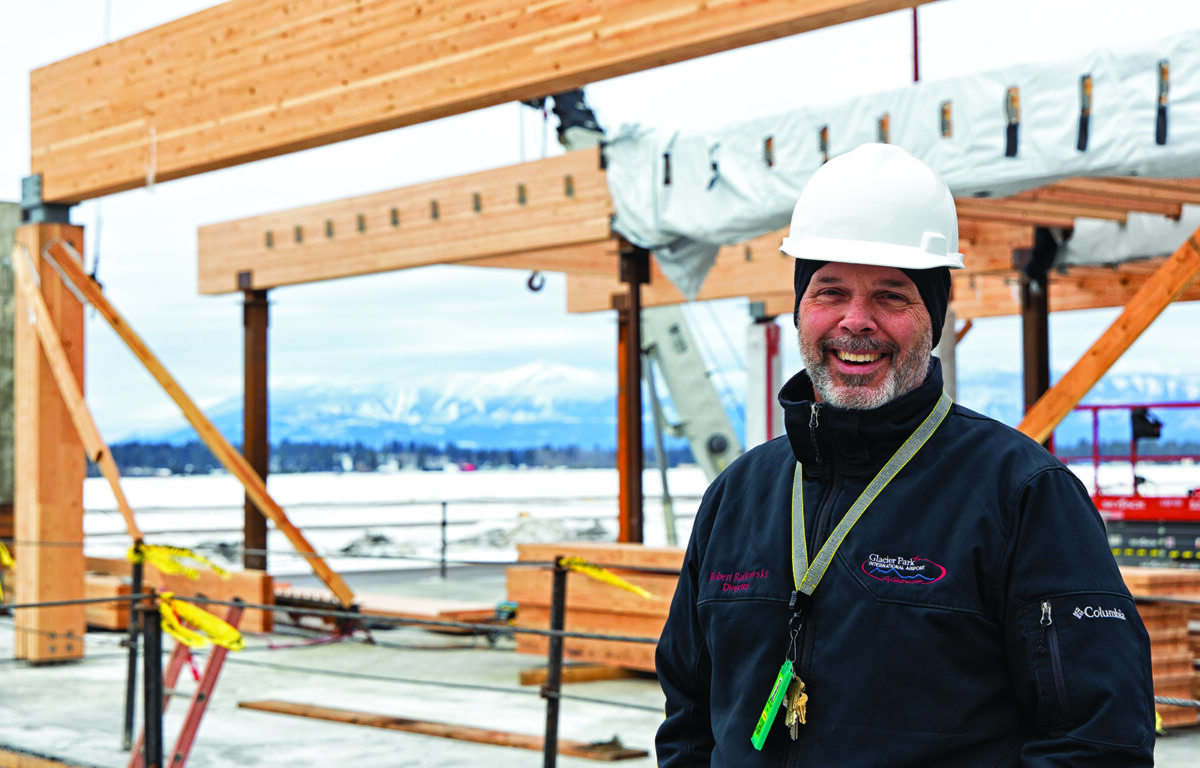
“We had to build an airport that can handle those summer travel peaks,” he said. “Basically, we have to build a church to hold an Easter Sunday crowd.”
The airport has also recently expanded its parking lot in response to what Ratkowski said was a trend that surprised him: a jump in shoulder season flyers from the Flathead Valley. In years past, the parking lot out front had more than enough capacity, but a year ago, they had to build an overflow lot. Ratkowski attributed that to the valley’s growing population and originating business travel. The new lot added 395 spaces.
Ratkowski said he is hopeful that the expansion of the parking lot and the airport as a whole will serve the valley for years to come. Just about every afternoon, Ratkowski dons a hardhat and takes a walk through the construction zone to see what progress is being made; some days there’s not much change, but other days the progress is dramatic, he said. While construction workers build walls, pour concrete and install heating systems, just a few dozen feet away, behind a wall, airline employees are loading and unloading baggage, deicing planes and getting thousands of passengers on their way. The dueling efforts — running an airport and expanding an airport — are a reminder of the challenge Ratkowski and his team face.
“We’re sort of rebuilding an engine while it’s still running,” Ratkowski said with a smile.